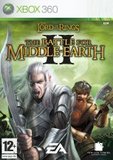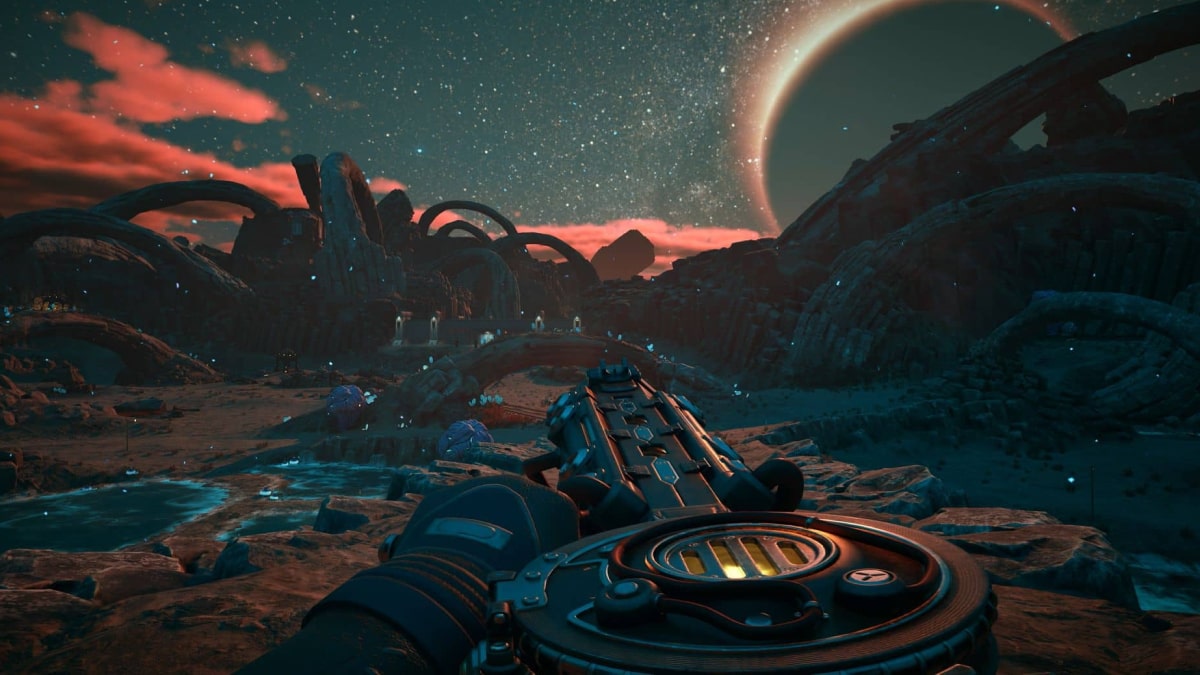You can trust VideoGamer. Our team of gaming experts spend hours testing and reviewing the latest games, to ensure you're reading the most comprehensive guide possible. Rest assured, all imagery and advice is unique and original. Check out how we test and review games here
PC and console gaming is becoming increasingly similar, with the majority of PC releases that would have been exclusive a few years back, now also cropping up on a next-gen system or two. The RTS is one genre that hasn’t faired so well in this cross-platform age, with previous efforts to bring the mouse and keyboard controlled gameplay to consoles failing quite miserably. Unless consoles adopt PC-style keyboard and mouse control systems, it’s unlikely that the RTS will ever be a perfect fit on a console, but EA have produced the first truly enjoyable modern RTS on a console. With Battle for Middle-earth II being the RTS chosen for such an honour, the source material could hardly have been more novice-friendly.
When the RTS sequel graced the PC earlier in the year it was met with much acclaim, mainly due to its impressive production values, but also for offering an experience that all PC gamers could enjoy. It didn’t offer the depth that hardcore genre fans would have liked, but as far as RTS games based around The Lord of the Rings go, it was by far the best option. The Xbox 360 game is more or less a straight port in terms of content, but it’s missing the dynamic campaign that added some longevity to the title. You still get the good and bad campaigns, each comprising eight levels, and a skirmish mode, but considering how fun the omitted mode was in the PC game, its absence is baffling.
Whichever campaign you choose to play, you’ll gain control of the various races made famous through the books and the blockbuster Peter Jackson movies. Each race has a set of units for each soldier type, and the key to combat is pitting the correct type against what the enemy is throwing at you. It’s quite simplistic, and many battles can simply be won by building up a huge army and storming through the enemy, but it works well given the similarly simple controller at your disposal. Aside from building resource gathering points and the required troop training buildings, there’s also an element of base defence to dabble with, although it’s not needed for the majority of the campaign.
This is The Lord of the Rings, and seeing as you can’t very well run around with a whole team of Gandalfs or Aragorns, you can make use of these well-known characters through the Heroes system. These heroes can be recruited as you play through the game, and each one has a set of special attacks that can devastate the enemy forces. To help you out even more, special powers can be obtained through a tech tree system, giving you access to handy abilities such as healing soldiers or bombarding enemies with flaming boulders. The game tends to go for flash over depth of thought, but a number of offensive and defensive options are available, if you wish to make use of them.
All this is lovely, but how does the game actually work with the Xbox 360 controller? Very well actually. While there’ll never be the argument over which control system is better, like PC and console gamers regularly partake in for the FPS genre, EA has done a damn fine job of fitting everything in. The analogue sticks control your pointer and camera movement, and the ‘A’ button performs actions; it’s used to make menu selections, command your units to move, and direct them to attack a highlighted enemy unit. It’s simple stuff, but it’s the left and right triggers that do the magic.
Without going into insane detail and turning this into an instruction manual, the left trigger is used in combination with the ‘A’ button to select all on-screen units, while the right trigger brings up a context sensitive menu for the item you’ve selected. Select a builder unit and the right trigger will bring up a menu of buildings that the builder can build, and it’s the same principle for every unit and building in the game. More advanced unit selections (including a unit paint tool and one by one unit selection) and actions can be carried out using the other buttons adorning the controller, but for the most part you can get by with the two analogue sticks, the ‘A’ button and the triggers.
Once you’ve beaten the two campaigns and grown tired of skirmishes against the AI, the online multiplayer mode awaits you. Possibly in an effort to make up for the missing single-player mode, Xbox 360 owners have plenty of online match types to play with. The traditional skirmish mode will be where you’ll probably try your first online game, and is fun for up to four players, with the option to battle in teams. Other game types include King of the Hill, Capture and Hold, Resource Race, and Hero Vs Hero. The modes are pretty self explanatory, with the Hero Vs Hero mode being the only real oddity among the bunch. With just four Hero characters on each team, it’s a rather different RTS experience, but one that might find some fans.
Some games simply look like PC games, and Battle for Middle-Earth II is one of them. It’s far from an ugly game, but it doesn’t feature the lavish gloss that many next-gen titles so clearly display. Played on a high definition display you’d be hard pressed to distinguish the Xbox 360 game from the PC original (other than the GUI), but on a standard TV set things aren’t so pretty. With a high number of units on screen, and a large amount of text, the game becomes something of a mess. It’s still playable, but nowhere near the crisp and clear experience you’ll get if playing in HD. Other than clearly showing its PC roots, blocky shadows included, the only real downsides come from bouts of slowdown during intense battles, but it’s not a big problem.
Making use of a movie license is something EA’s studios are experts at, and Battle for Middle-earth II is no exception. The most striking resemblance comes from the musical score, which is inspired from the movie, and goes hand in hand with the epic battles taking place on the screen. Hugo Weaving voices Elrond throughout the game, and other actors also reprise their roles from the movies, including Iain McKellen and Christopher Lee. It’s an almost impeccable package, but the opening tutorials might cause a few problems. The voiced instructions come and go, and unless you’re on the ball you’ll find yourself wondering just what you’re meant to do. An objectives screen (which can be accessed throughout the game) helps a little, but the exact instructions can’t be repeated.
With so many people claiming that the video game industry is becoming stale and running out of new ideas, it’s EA of all people who have given console gamers a new genre to dabble with. Yes, the RTS genre has been seen on consoles in the past, but never to this level, and with this much polish. The single-player game is a tad short due to the missing dynamic campaign from the PC game, but the online game modes should provide plenty of value for money, and the Xbox 360 specific achievement points are nicely spread out. PC gamers will turn their noses up at what is undoubtedly an inferior product, but console gamers have something new to experience, in a genre that just didn’t seem possible.
Lord of the Rings, The Battle For Middle-Earth II
- Platform(s): PC, Xbox 360
- Genre(s): Real-time, Strategy
/https://oimg.videogamer.com/images/12e3/battle_for_middle_earth_ii_24.jpg)






